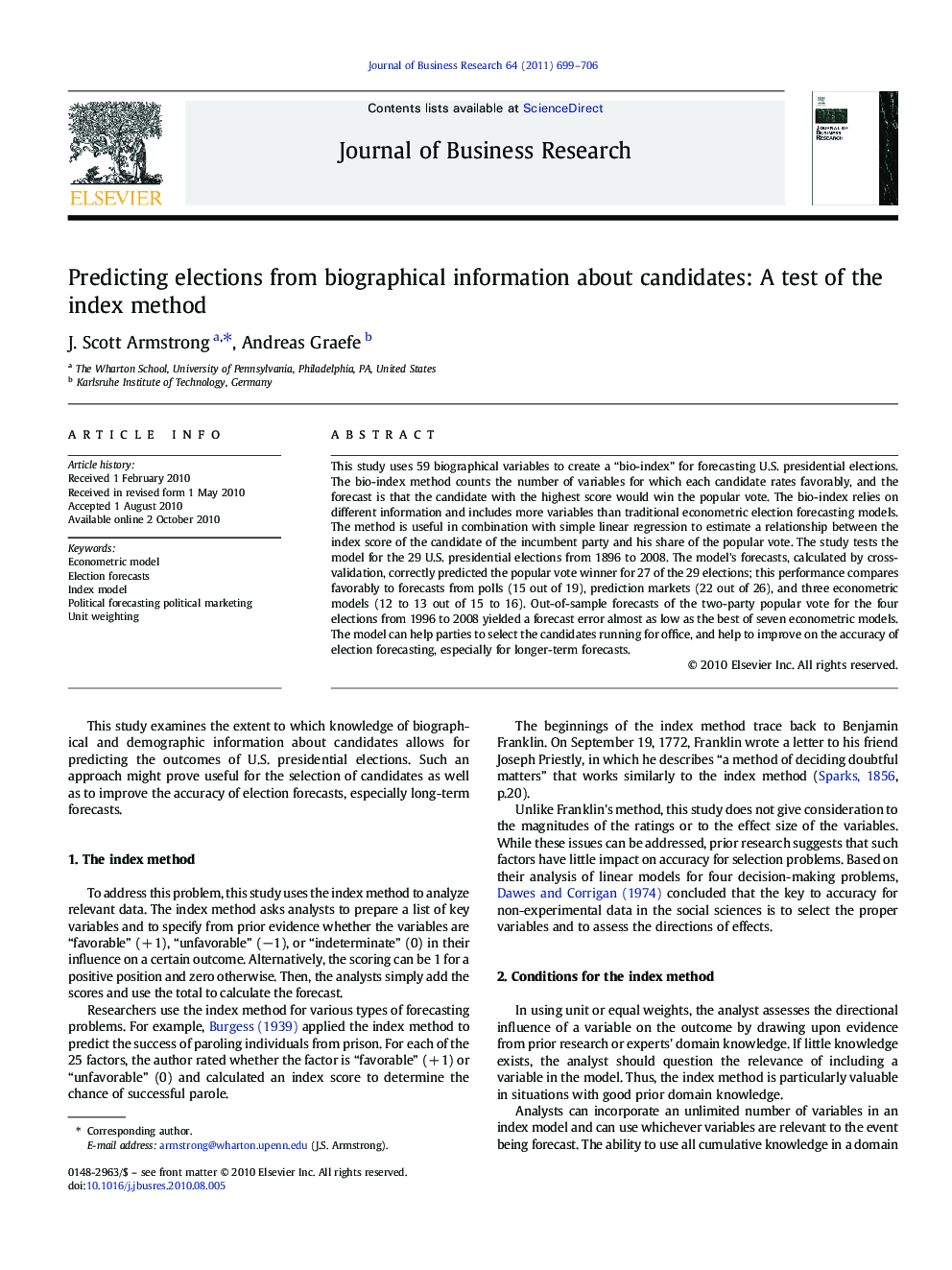| Article ID | Journal | Published Year | Pages | File Type |
|---|---|---|---|---|
| 1017784 | Journal of Business Research | 2011 | 8 Pages |
This study uses 59 biographical variables to create a “bio-index” for forecasting U.S. presidential elections. The bio-index method counts the number of variables for which each candidate rates favorably, and the forecast is that the candidate with the highest score would win the popular vote. The bio-index relies on different information and includes more variables than traditional econometric election forecasting models. The method is useful in combination with simple linear regression to estimate a relationship between the index score of the candidate of the incumbent party and his share of the popular vote. The study tests the model for the 29 U.S. presidential elections from 1896 to 2008. The model's forecasts, calculated by cross-validation, correctly predicted the popular vote winner for 27 of the 29 elections; this performance compares favorably to forecasts from polls (15 out of 19), prediction markets (22 out of 26), and three econometric models (12 to 13 out of 15 to 16). Out-of-sample forecasts of the two-party popular vote for the four elections from 1996 to 2008 yielded a forecast error almost as low as the best of seven econometric models. The model can help parties to select the candidates running for office, and help to improve on the accuracy of election forecasting, especially for longer-term forecasts.
